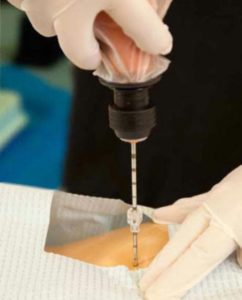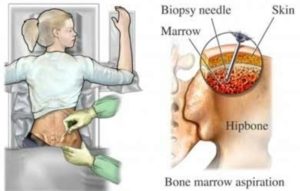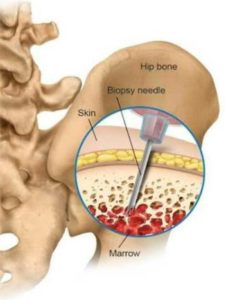What is bone marrow?
Before digging out more about bone marrow transplant, first have a look at the facts of bone marrow. Have a clear idea, what bone marrow is all about?
Bone marrow is the spongy, fatty tissue inside your bones. Bone marrow has a fluid portion and a more solid portion. The primary function of this bone marrow is to produce the following parts of the blood:-
- Red blood cells(these cells carry oxygen and nutrients throughout the body)
- White blood cells(they fight against infection platelets, which are responsible for the formation of blood clots)
Bone marrow also contains immature blood-forming stem cells known as hematopoietic stem cells, or HSCs. These stem cells are unspecialized, meaning they have the potential to multiply through cell division and either remain stem cells or differentiate and mature into many different kinds of blood cells. The HSCs found in the bone marrow make new blood cells throughout your life.
The Bone Marrow Transplant:-
A bone marrow transplant is a medical procedure performed to replace bone marrow that has been damaged or destroyed by disease, infection, or chemotherapy. This procedure involves transplanting blood stem cells, which travel to the bone marrow where they produce new blood cells and push up the growth of new marrow.
A bone marrow transplant replaces your damaged stem cells with healthy cells. And this may help your body in the making of enough white blood cells, platelets, or red blood cells to avoid infections, bleeding disorders, or anaemia.
Healthy stem cells can come from a donor, or they can come from your own body. In such cases, stem cells can be harvested, or grown, before you start chemotherapy or radiation treatment. Those healthy cells are then stored and used in transplantation.
Why it’s done?
When a person’s marrow is not functioning properly due to cancer treatments, chronic infections and disease, the bone marrow transplant is needed.
Here are few more reasons to go ahead with the bone marrow transplantation:-
- Aplastic anemia- it’s a disorder in which the marrow stops making new blood cells.
- Sickle cell anemia- Which is an inherited blood disorder that causes misshapen red blood cells.
- Thalassemia- the body of a thalassemia patient makes an abnormal form of hemoglobin(an integral part of red blood cells).
- Cancers that affect the marrow
- Damaged bone marrow due to chemotherapy
- Congenital neutropenia, which is an inherited disorder that causes recurring infections
Types of bone marrow transplant:-
There are two main types of bone marrow transplants. The choice of the appropriate type depends on the reason you need a transplant.
- Autologous Transplants:-
Autologous transplants involve the use of a person’s own stem cells. They typically involve harvesting your cells before beginning a damaging therapy to cells like chemotherapy or radiation. After the treatment is done, your own cells are returned to your body.
This type of transplant isn’t always available. It can only be used if you have a healthy bone marrow.
- Allogeneic Transplants:-
Allogeneic transplants involve the use of cells from a donor. The donor must be a close genetic match. Often, a compatible relative is the best choice, but genetic matches can also be found from a donor registry.
Allogeneic transplants are necessary if you have a condition that has damaged your bone marrow cells. However, they have a higher risk of certain complications. You will be put on medications to suppress your immune system so that your body doesn’t attack the new cells. This can leave you susceptible to illness.
The success of an allogeneic transplant depends on how closely the donor cells match your own.
The preparation:-
Before you go for the transplantation, few tests are required regarding your health history. Theses tests indicate what type of bone marrow cells you need. The situation may arise that you have to undergo radiation or chemotherapy to kill of cancer cells marrow cells before you get the new stem cells.
Asking questions are important. Note down your queries and your questions and bring them to your doctor. The consultation is a necessary part. As, talking to your doctor can help you through this process.
The procedure:-
When your doctor thinks you’re ready, you are good to go with the transplantation. The procedure is similar to a blood transfusion.
If you’re having an allogeneic transplant, bone marrow cells will be harvested from your donor a day or two before your procedure. If your own cells are being used, they’ll be retrieved from the stem cell bank.
- During a bone marrow harvest, cells are collected from both hipbones through a needle. You will be under anaesthesia for this procedure.
- During leukapheresis, a donor is given five shots to help the stem cells move from the bone marrow and into the bloodstream. Blood isthen drawn through an intravenous (IV) line, and a machine separates out the white blood cells that contain stem cells.


A needle called a central venous catheter or port will be installed on the upper right portion of your chest. This allows the fluid containing the new stem cells to flow directly into your heart. The stem cells then disperse throughout your body. They flow through your blood and into the bone marrow. They’ll become established there and begin to grow.
The bone marrow transplant is done over several sessions for a few days. Multiple sessions give the new stem cells the best chance to integrate themselves into your body. That process is known as engraftment.
Through this port, you will also receive blood transfusions, liquids, and possibly nutrients. You may need medications to fight off infections and help the new marrow grow. This depends on how well you handle the treatments.
During the whole transplantation, you’ll be closely monitored for any complications.
Recovery:-
During treatments, your immune system will be compromised. Therefore, you have to stay in a special section of the hospital that’s reserved for people receiving bone marrow transplants. This reduces your risk of being exposed to anything that could cause an infection.
The success rate of a bone marrow transplant is primarily dependent on how closely the donor and recipient genetically match. Certainly, it can be very difficult to find a good match among unrelated donors.
The state of your engraftment will be regularly monitored. The first sign of engraftment is a rising white blood cell count. This shows that the transplant is starting to make new blood cells.
Generally recovery time for a bone marrow transplant is around three months. However, it may take up more time to recover fully. Recovery depends on numerous factors:-
- Donor match
- Radiation
- The condition being treated
- Chemotherapy
- Where the transplant is performed
- There’s a possibility that some of the symptoms you experience after the transplant will remain with you for the rest of your life.
Risks:-
A bone marrow transplant is a massive medical procedure. So the chances of risks are obvious. Given below are few risk factors:-
- Muscovites, which is a condition that causes inflammation and soreness in the mouth, throat, and stomach
- Nausea, diarrhoea, or vomiting
- A drop in blood pressure
- Headache
- Fever
- Pain
- Chills
Listed above are the short term symptoms. But a bone marrow transplant can cause complications. Your chances of developing these complications depend on several factors, including:
- The disease you’re being treated for
- Your age
- Your overall health
- The type of transplant
Complications can be mild or very serious, and they can include:
- Graft-versus-host disease (GVHD), which is a condition in which donor cells attack your body
- Graft failure, which occurs when transplanted cells don’t begin producing new cells as planned
- Bleeding in the lungs, brain, and other parts of the body
- Cataracts
- Early menopause
- Damage to vital organs
Talk to your doctor about any concerns you may have. Your doctor will help you weigh the risks and complications against the potential benefits of this procedure.
